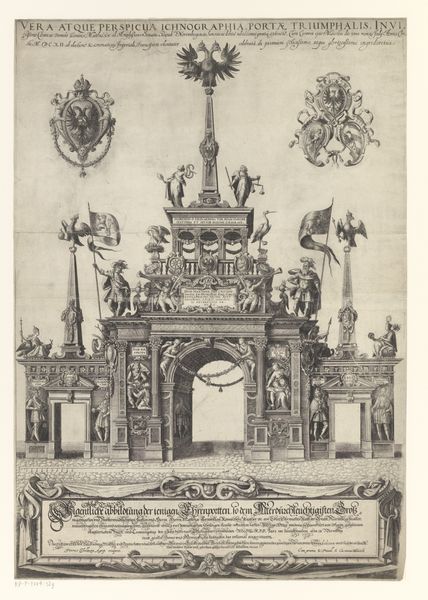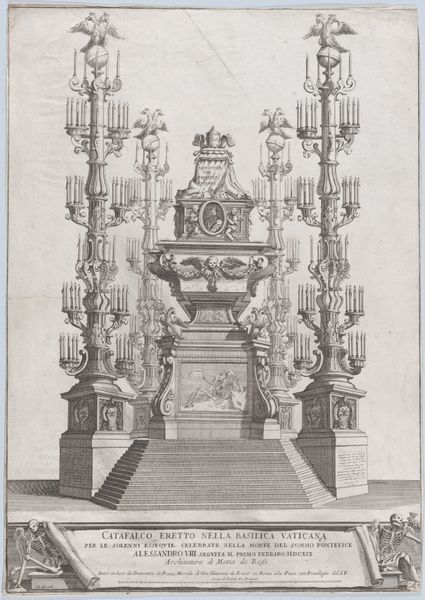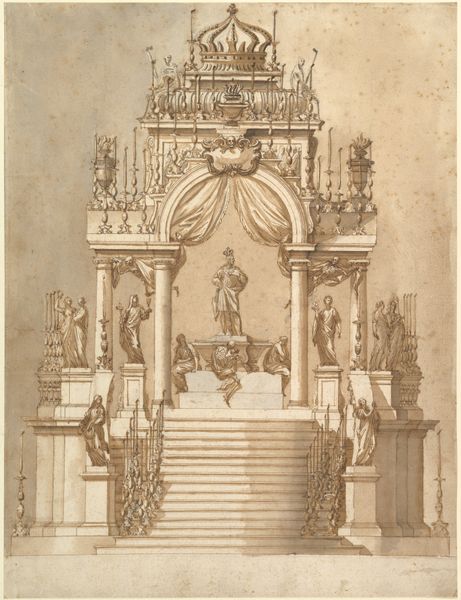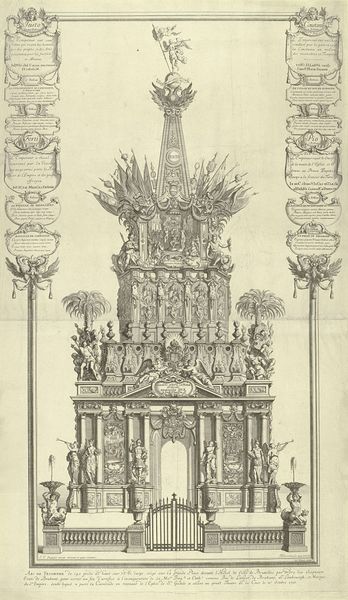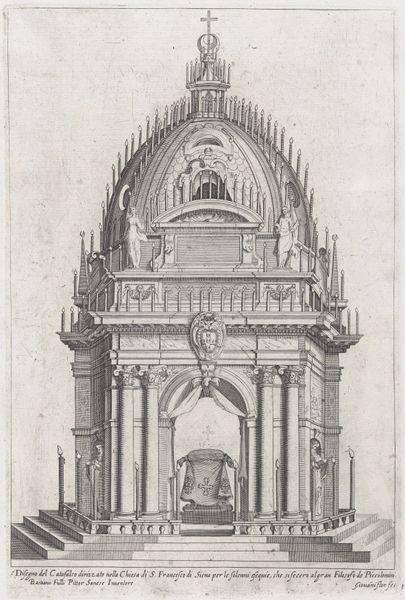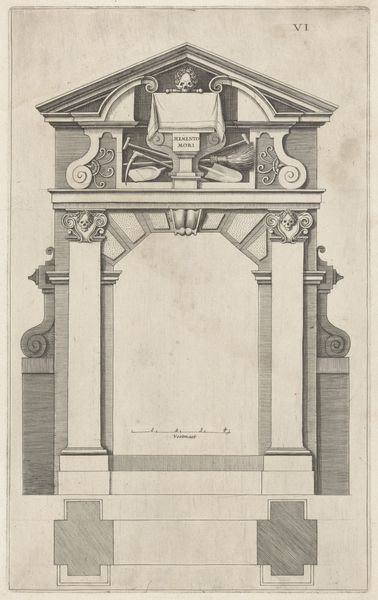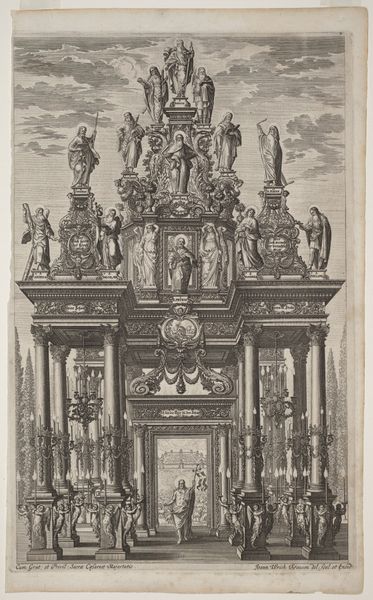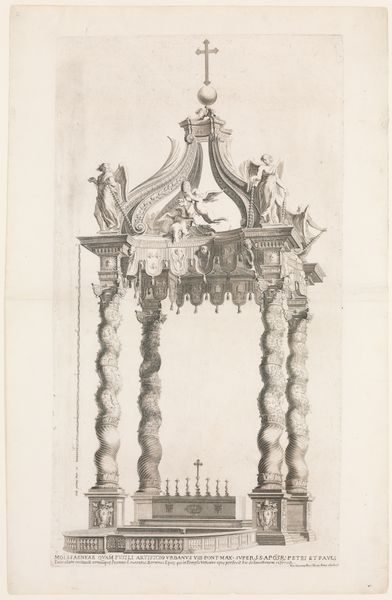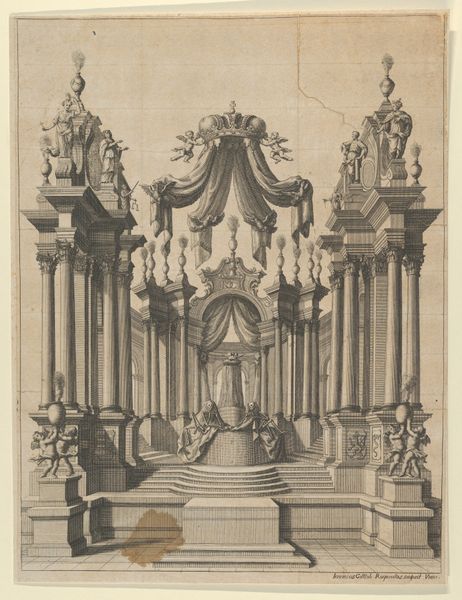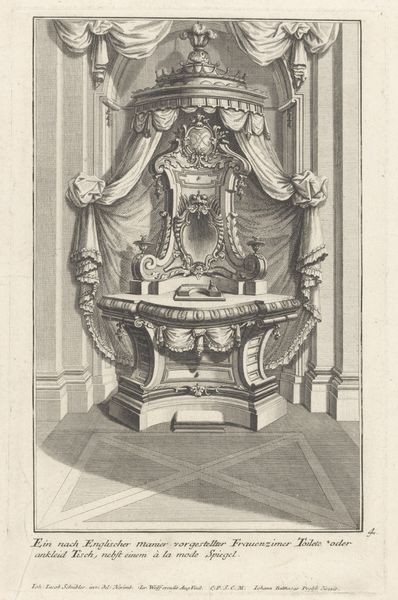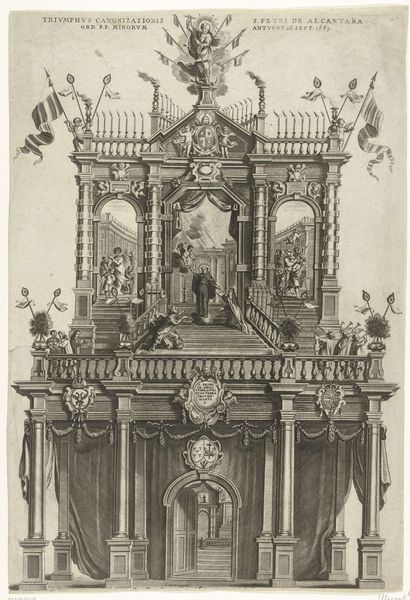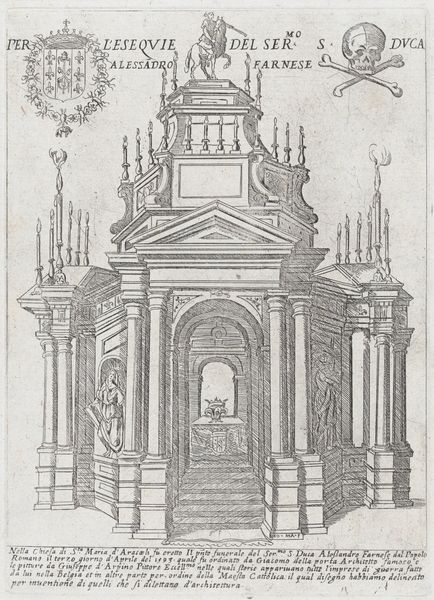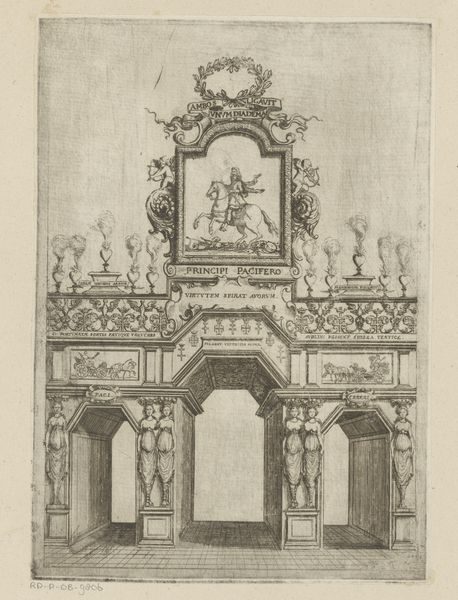
Catafalque for Pope Clement X; central structure at the top of a fifteen step platform, with columns surmounted by candelabra at each of the four corners 1676
0:00
0:00
drawing, print, etching, engraving, architecture
#
drawing
#
baroque
# print
#
etching
#
etching
#
history-painting
#
engraving
#
architecture
Dimensions: Sheet (Trimmed): 17 3/16 × 12 13/16 in. (43.6 × 32.5 cm)
Copyright: Public Domain
Curator: Giovanni Battista Falda created this etching in 1676, titled "Catafalque for Pope Clement X." It's currently held at the Metropolitan Museum of Art. Editor: The image is dominated by strong vertical lines rising above a wide base. There is a strong impression of gravity countered by the ornate towers, each topped with bright starbursts. The dark hatching conveys both weight and drama. It certainly captures the spectacle of the baroque! Curator: Absolutely. These catafalques were elaborate temporary structures erected during the funerals of important figures, particularly popes. Falda was documenting the obsequies for Clement X. Understanding these structures is crucial, as they functioned as potent visual symbols reflecting power and the Church’s socio-political position. How did public spectacle like this cement existing social and gendered hierarchies? Editor: It's all about the performance of power, right? Think about the artistic labour involved: printmaking made the event reproducible, extending its reach beyond those physically present at the Basilica. It almost immortalizes not just Clement X but the performative aspects of mourning. Curator: Exactly! Printmaking was central to distributing images of power. Clement X, despite his short and somewhat controversial reign, gets this spectacular sendoff, visualized in a print ready for circulation and reinforcing specific notions of Papal authority. We must be critical in how we read such depictions. What is included and what is omitted? Editor: Indeed, that’s critical. What does the exclusion of ordinary citizens say? The print focuses on the elites and the architectural structure of grief and power. Curator: Also the overwhelming presence of Christian iconography – candelabras acting like blazing totems, directing our vision heavenward, while at the centre we have what is likely the visage of the Pope, who has returned to dust – and will himself return to heaven. Editor: Yes, there is a great tension between mortality and eternity. It is also an interesting case study in image control through commissioned works. Curator: What strikes me, ultimately, is how such moments, rendered and circulated as images, not only memorialized the deceased, but played a crucial role in consolidating the symbolic authority of the papacy. Editor: I leave with an even deeper appreciation for the ways that art, particularly in its reproduced form, shaped perception, political and otherwise, for centuries after the fact.
Comments
No comments
Be the first to comment and join the conversation on the ultimate creative platform.
